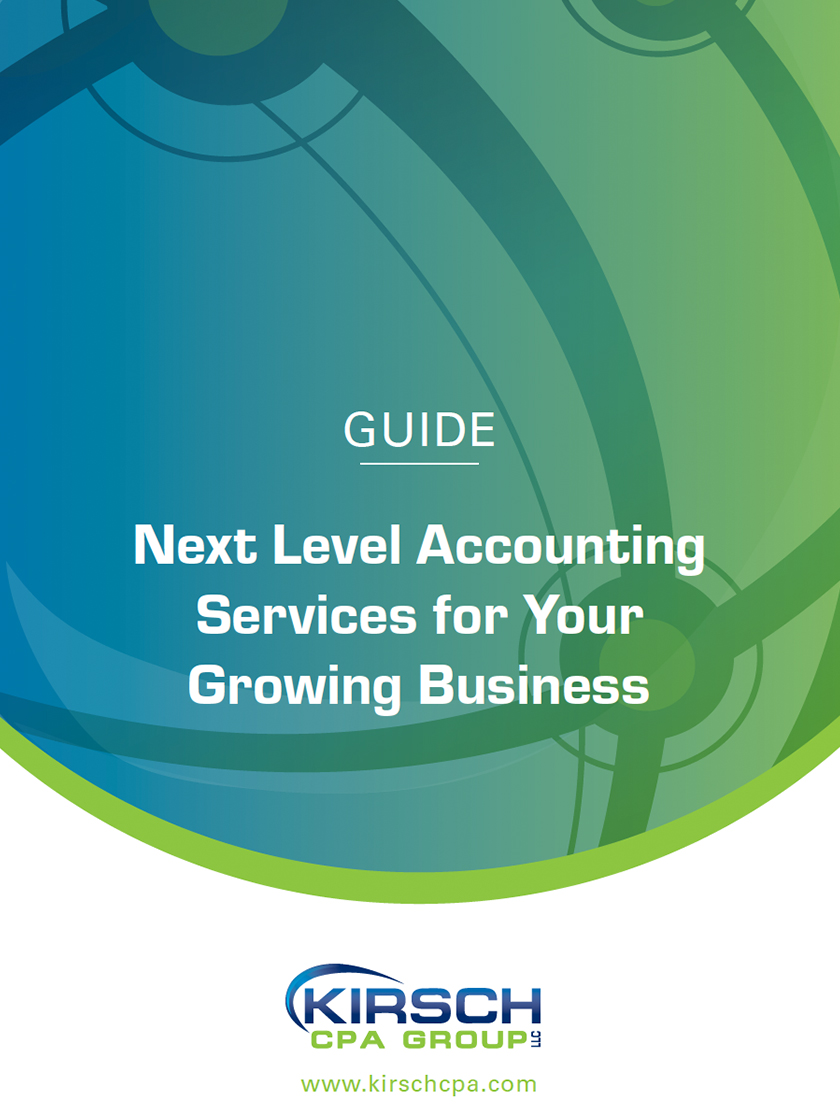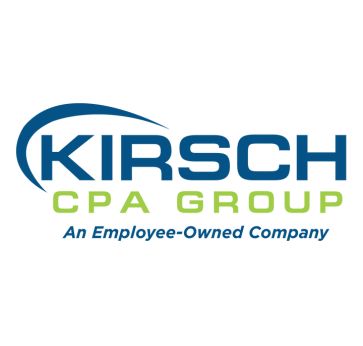What Can Your Small Business Do Now to Lower Taxes for 2024?
Jul 15, 2024

Summer is a good time to take stock of how your small business is doing this year and consider options for reducing your 2024 federal income tax bill. Thankfully, it appears there won’t be any significant unfavorable federal tax changes that will take effect next year. If that’s an accurate prediction, the 2024 tax planning environment is straightforward, and you should consider implementing the following strategies before year end.
Timing Business Income and Deductions
If you’ve structured your business as a “pass-through” entity, your share of its income passes through to your personal return, where it’s taxed at your individual tax rate. Pass-through entities include:
- Sole proprietorships,
- S corporations,
- Partnerships, and
- Limited liability companies (LLCs) that are taxed as sole proprietorships or partnerships.
The traditional year-end strategy of deferring taxable income into next year while accelerating deductible expenditures into this year makes sense if you’ll be in the same or lower federal income tax bracket in 2025. (See “2024 Tax Rates and Brackets for Individuals,” below.) At minimum, deferring income and accelerating deductions will postpone part of your tax obligation from 2024 until 2025. Contact your tax advisor for specific ways to defer income and accelerate deductions.
On the other hand, if you expect to be in a higher tax bracket next year, take the opposite approach: Accelerate income into this year (if possible) and postpone deductible expenditures until 2025. That way, more income will be taxed at this year’s lower rate instead of at next year’s higher rate.
Tapping into Generous Depreciation Tax Breaks
Depreciation deductions lower your business income, so it often makes sense to maximize them in the current tax year. The first-year Section 179 depreciation deduction allows eligible small to midsize businesses to write off the entire cost of some or all of their depreciable asset additions on the current year’s federal income tax return (and possibly on their state income tax return). So, if you need to add or replace equipment and vehicles, consider making additional qualifying purchases between now and December 31.
Unfortunately, there are several limitations on Sec. 179 deductions. For tax years beginning in 2024, the maximum Sec. 179 deduction is $1.22 million, but a phaseout kicks in if you put more than $3.05 million of qualifying assets into service in the year. Also, Sec. 179 deductions can’t cause your business to have negative taxable income.
For assets that can’t be written off in the first year they’re placed in service under Sec. 179, you may be able to claim a different tax break: first-year bonus depreciation. As things currently stand, 60% first-year bonus depreciation is available for qualified new and used property that’s placed in service in calendar year 2024. That’s down from 80% last year and 100% in 2022. Next year, it’s scheduled to drop to 40%. That said, it’s possible that 100% first-year bonus depreciation could be retroactively reinstated for 2023 and 2024. Contact your tax advisor for the details on how the two first-year depreciation tax breaks work, further details on the types of assets that qualify for each and updates on their respective statuses.
Alternatively, if you expect significant tax-rate increases in future years, you could be better off declining first-year depreciation deductions in the current tax year and instead depreciating newly acquired assets over several years under the regular tax depreciation schedules. If tax rates go up, the future depreciation write-offs could be worth more over the long run than a big first-year write-off.
The following special depreciation rules apply to business vehicle purchases:
Depreciation deductions for heavy SUVs, pickups and vans. Favorable federal income tax depreciation rules apply to new and used heavy vehicles used over 50% for business. For tax purposes, these vehicles are considered transportation equipment that’s eligible for Sec. 179 deductions and first-year bonus depreciation. To qualify for this favorable treatment, the vehicle must have a manufacturer’s gross vehicle weight rating (GVWR) of more than 6,000 pounds.
There’s also an inflation-adjusted limit on Sec. 179 deductions for heavy SUVs with GVWRs between 6,001 and 14,000 pounds. For these SUVs placed in service in tax years beginning in 2024, the limit is $30,500 if the SUV is used 100% for business. However, this limit doesn’t apply to heavy vehicles that aren’t classified as SUVs. Contact your tax advisor for guidance on which heavy vehicles aren’t considered SUVs.
Depreciation deductions for cars, light SUVs, light trucks and light vans. Special luxury auto depreciation limitations apply for these types of vehicles that are used over 50% for business. Thankfully, the limitations aren’t that strict. For passenger autos placed in service in 2024, the maximum luxury auto depreciation deductions are:
- $20,400 for year 1 if bonus depreciation is claimed ($12,400 if bonus depreciation isn’t claimed),
- $19,800 for year 2,
- $11,900 for year 3, and
- $7,160 for year 4 and thereafter until the vehicle is fully depreciated.
For vehicles placed in service in 2024, the $20,400 first-year luxury auto depreciation limit applies only to vehicles that cost at least $70,000. Vehicles that cost less are depreciated over six tax years. Contact your tax advisor for full details on the luxury auto depreciation rules.
Fortunately, you have until the deadline for filing your current-year federal income tax return — including any extension — to decide which depreciation option to use for assets placed in service in the current tax year. For businesses that uses the calendar year for tax purposes, the extended filing deadlines are:
- October 15, 2025, for sole proprietorships and C corporations, and
- September 15, 2025, for partnerships, LLCs taxed as partnerships and S corporations.
By those deadlines, you should know your business’s tax situation for 2024 and can work with your tax advisor to determine what’s appropriate for your situation.
Establishing a Tax-Favored Retirement Plan
If your business doesn’t already sponsor a tax-favored retirement plan, now might be the right time to consider setting one up. Current tax rules allow for significant deductible contributions. For example, if you’re self-employed and set up a SEP-IRA, you can contribute and deduct up to 20% of your net self-employment income, with a maximum contribution of up to $69,000 for 2024.
If you’re employed by your own corporation, up to 25% of your salary can be contributed to your account, with a maximum contribution of up to $69,000. If you’re in the 32% federal income tax bracket, making a maximum contribution could cut your federal income tax bill for 2024 by $22,080 ($69,000 times 32%).
Other small business retirement plan options include:
- SIMPLE-IRAs,
- Defined benefit pension plans, and
- 401(k) plans.
You can even set up a so-called “solo 401(k)” for just yourself.
Some of these other plan types may allow bigger deductible contributions, depending on your circumstances. Just bear in mind that, if your business has employees, you may have to make contributions for them, too.
Thanks to a change made by the SECURE Act, tax-favored qualified retirement plans, except for SIMPLE-IRAs, can be adopted and funded as late as the due date (including any extension) of the employer’s federal income tax return for the adoption year. The plan can then receive deductible employer contributions that are made by the due date (including any extension). And the employer can deduct those contributions on the return for the adoption year.
Important: The SECURE Act did not change the October 1 deadline to establish a SIMPLE-IRA.
For example, the deadline for setting up a SEP-IRA for a sole proprietorship that uses the calendar year for tax purposes is October 15, 2025, if you extend your 2024 individual federal income tax return to that date. That means you could set up a SEP-IRA by October 15, 2025, and make your initial contribution by that date. You can then claim the resulting deduction on your 2024 tax return. However, if you instead choose to set up a SIMPLE-IRA, you must set up the plan by October 1, 2024, to make a deductible contribution for the 2024 tax year.
Maximizing the QBI Deduction
A tax deduction based on business owners’ qualified business income (QBI) from pass-through entities is a key element of the Tax Cuts and Jobs Act. It can be up to 20% of a pass-through entity owner’s QBI, subject to restrictions that can apply at higher income levels.
Important: The QBI deduction can also be claimed for up to 20% of qualified dividends from a real estate investment trust and up to 20% of qualified income from publicly traded partnerships.
Because of the income limitations on the QBI deduction, tax planning moves (or non-moves) can increase or decrease your allowable 2024 QBI deduction. For instance, claiming big first-year depreciation deductions or making big deductible retirement plan contributions can have the unanticipated negative side effect of reducing this year’s allowable QBI deduction. Work with your tax advisor to optimize your overall tax results.
Ready, Set, Plan
Assuming the current federal income tax rules remain in place through 2025, you can implement these midyear tax planning strategies with confidence. As mentioned, Kirsch CPA Group can be a valuable partner in determining the right course of action based on your circumstances.
2024 Tax Rates and Brackets for Individuals
Income from pass-through entities — including sole proprietorships, S corporations, partnerships, and limited liability companies taxed as sole proprietorships or partnerships — is reported on the owners’ personal tax returns for the year and taxed as ordinary income. Here’s a summary of the federal tax rates on ordinary income for 2024.
2024 Federal Tax Rates on Ordinary Income
| Tax Rates | Single | Married Joint Filers | Head of Household |
| 10% | $0 – $11,600 | $0 – $23,200 | $0 – $16,550 |
| 12% | $11,601 – $47,150 | $23,201 – $94,300 | $16,551 – $63,100 |
| 22% | $47,151 – $100,525 | $94,301 – $201,050 | $63,101 – $100,500 |
| 24% | $100,526 – $191,950 | $201,051 – $383,900 | $100,501 – $191,950 |
| 32% | $191,951 – $243,725 | $383,901 – $487,450 | $191,951 – $243,700 |
| 35% | $243,726 – $609,350 | $487,451 – $731,200 | $243,701 – $609,350 |
| 37% | $609,351 and up | $731,201 and up | $609,351 and up |
Assuming the current tax regime remains in place for 2025, the brackets listed above will be adjusted for inflation.
Schedule an appointment to learn how we can support you
© Copyright 2024. All rights reserved.
Sign Up for Email Updates
Accounting & Financial News

6 Year-End Small Business Tax Saving Tips
There's still time for small businesses and their owners to implement strategies to save taxes for 2025.…

Manufacturers: Act Now To Claim the Sec. 179D Deduction for Energy-Efficient Building Improvements
The One Big Beautiful Bill Act (OBBBA) repeals or reduces many clean energy tax incentives, including the…




